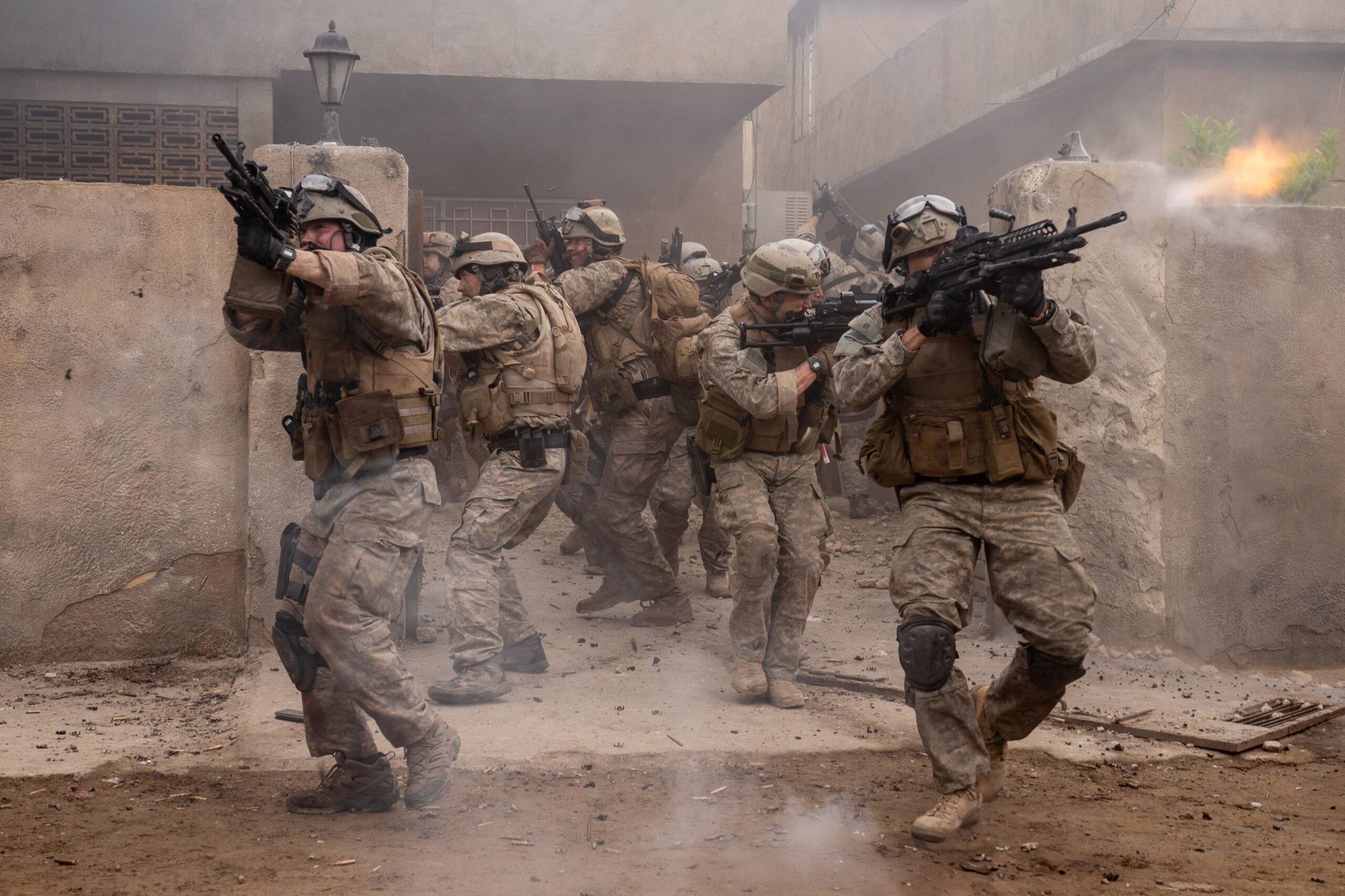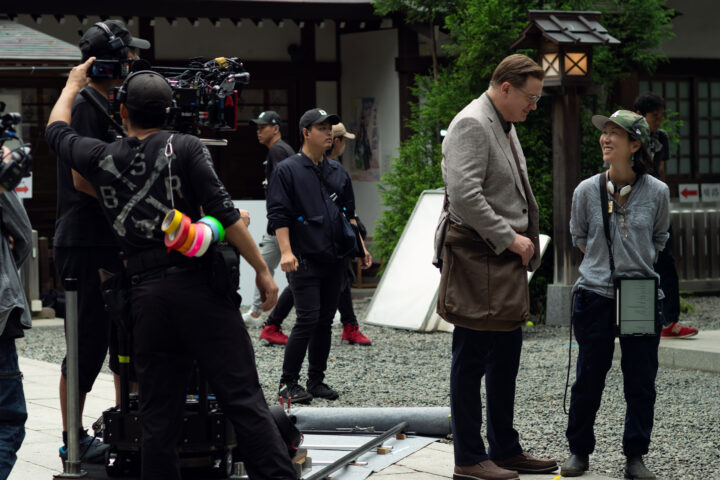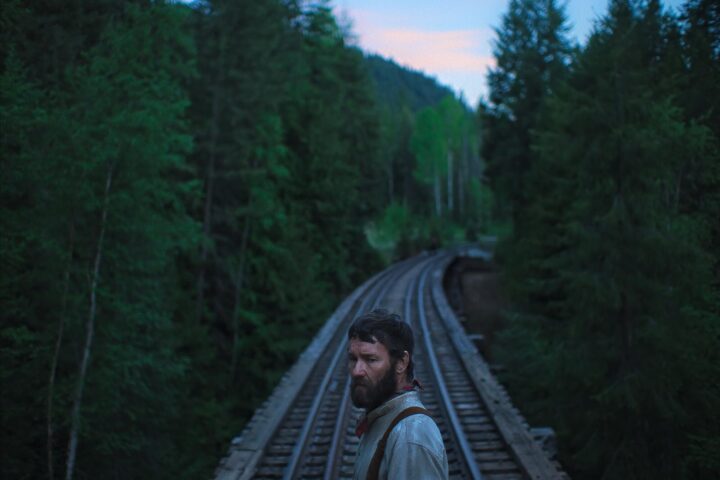Alex Garland and Ray Mendoza’s Warfare is a relentless, war is hell exercise delivering exactly what its title promises: an immersive descent into the chaos of combat. Collaborators on last year’s provocation Civil War (Garland helmed with Mendoza as military advisor), the pair has now co-written and directed a film that detonates onscreen with the force of a heat-seeking missile locked on the audience.
Mendoza, a former Navy SEAL whose own platoon came under fire in Iraq in 2006, draws from firsthand experience to craft an atypical war film refusing to indulge in glory or statement; its young men fight less for ideology than survival. In recreating a perilous, November 2006 surveillance maneuver that took place late during the Second Battle of Ramadi in Iraq, Garland and Mendoza set out to mount the soldiers’ war zone experience without embellishment. There are no backstories, confidences, mentors or rookies that become unexpectedly heroic. Instead, the movie boxes us into a real-time battle of searing intensity.
The picture opens on a fraternal calm before the storm, its band of brothers indulging in booze-fueled partying to the blasts of Eric Prydz’s Call on Me,before an unspecified, dead-of-night mission calls them to a nondescript Iraqi house in the rural town of Ramadi. That house and environs, occupied by a frightened Iraqi family, will become the film’s single claustrophobic location.
At dawn, platoon sniper Elliott (Cosmo Jarvis) is laser fixed through a window on possible threats outside. The men—played notably by Jarvis, Will Poulter, D’Pharaoh Woon-A-Tai (as Mendoza himself), Noah Centineo, Kit Connor and a sharp Joseph Quinn—measuredly assess and triage danger, mostly through technical jargon, the film quietly building authority through on-the-job precision. The threat is out there somewhere. But how close?
Garland and Mendoza expertly calibrate twenty minutes of tension through stillness, deceptive silence (there’s no musical score) and meticulous military protocol. But when a grenade breaches the window all hell breaks loose, the stakeout gravely deteriorating after a powerful IED explosion thwarts rescue. Bloodily torn limbs, agonized screams and what appears to be imminent death make for a graphically unflinching (it will rile some audiences) statement on the spoils of battle thrust upon youth who answer the call of war.
At a lean 95 minutes, Warfare is stripped of any jingoism, instead emphasizing the visceral and psychological tolls of near-death terror in a fog of war. This makes it a movie experience of throttling urgency and verisimilitude, blowing many a lauded war picture out of the water. Unlike audience-friendly entries like Saving Private Ryan or Life Is Beautiful, which suggest catharsis through character and closure, Warfare belongs in the company of Paths of Glory or Come and See—unsentimental, close-to-the-bone, unsettling. It’s not quite an anti-war film but could be read that way given its decision not to salute, but rather merely to stay alive.
It’s also a bit of a departure for the visionary Garland, whose thematic deep-think screenplays and pictures often feature conflicted characters who undergo a psychological or existential crisis amidst such topics as AI and sentience (Ex Machina); dangers in biology and the environment (Annihilation); barbarism as the civilized world falls away (28 Days Later, Civil War) and toxic masculinity (Men). Several of those are embedded in Warfare, however less didactic.
Special credit goes to Glenn Freemantle’s stunning sound design, which captures the sharp terror of combat—bullets whizzing by and violent explosions—with frightening realism. His approach, shifting into abstract, muffled sound after nearby explosions, replicates hearing loss with dramatic authenticity, making Warfare a film that begs to be seen with the best possible sound—Dolby Cinema or IMAX. And the realistic set design, rebuilding an entire Iraqi block on London’s Bovingdon Airfield Studios, is a strikingly believable scale replica of the real Ramadi.
The cast is uniformly excellent, with Jarvis and the haunting Quinn given substantial moments of pathos. The fine Poulter has disarming moments of leadership self-doubt and, in the final stretches, an authoritative Charles Melton brings tactical relief and considerable stoic charisma.
It’s not flawless—the real soldier photos in the credits, their faces mostly masked (presumably due to privacy or duty dictates), feel like a familiar trope that doesn’t quite land given the film’s deliberate lack of character personalization. But that’s a very small quibble for a film that takes its place among the most harrowing depictions of youth in combat ever put to screen. Warfare doesn’t aim to tell us what war means. It shows us what it feels like.
4 stars



